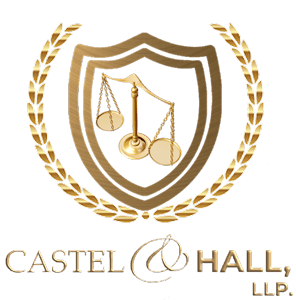By: Lara Werneck
Temporary (nonimmigrant) worker visas are for those who are interested in migrating to the U.S. for employment purposes, but solely for a fixed period of time. A petition filed by the prospective employer is required for most of these visas, including the H-1B and H-2B. Such visas will be discussed in further detail below; specifically, in regards to eligibility, the filing/program process and period of stay for each. Please note that some of the requirements for temporary nonimmigrant visas have been altered or changed due to the COVID-19 pandemic. Please check the U.S. Citizenship and Immigration Services (USCIS) website for the most up to date information.
H-1B Visa- Specialty Occupations, DOD Cooperative Research and Development Project Workers, and Fashion Models:
Eligibility:
As outlined by USCIS, the H-1B visa applies to people who “wish to perform services in a specialty occupation.” Among other things, one’s specialty occupation employer must require the attainment of a bachelor’s or higher. According to USCIS, those who perform services of “exceptional merit and ability relating to a Department of Defense (DOD) cooperative research and development project” are also eligible for this type of nonimmigrant visa; similar to workers categorized under “specialty occupations,” to qualify under such description, the employer must require a bachelor’s degree or higher as well. Lastly, the H-1B visa also applies to people who wish to perform “services as a fashion model of distinguished merit or ability.”
Filing Process:
To file a petition, the employer/agent must first apply for and receive a certified Labor Condition Application (LCA) from the U.S. Department of Labor (DOL). Next, the employer/agent must then submit a completed I-129 form to USCIS. It is important to note that both requirements, the certified LCA and I-129 form, only apply to specialty occupation workers and fashion models. Once the Form I-129 petition has been approved, the prospective H-1B worker who is outside the United States may apply with the U.S. Department of State (DOS) at a U.S. embassy or consulate abroad for an H-1B visa (if a visa is required). Regardless of whether a visa is required, the prospective H-1B worker must then apply to U.S. Customs and Border Protection (CBP) for admission to the United States in H-1B classification.
Period of Stay:
According to USCIS, “as an H-1B occupation worker or fashion model, you may be admitted for a period of up to three years.” An extension of legal stay is possible, but generally does not surpass a total of 6 years. In the event that one’s employment is terminated by the employer before the end of their authorized stay, the employer is liable for the costs of their return. However, the employer is not liable for the costs of the employee’s return if the employee voluntarily resigns from their position.
H-2B Visa- Temporary Non-Agricultural Workers:
Eligibility:
To qualify for the H-2B visa, as described by USCIS, the petitioner must establish several positions, including that “there are not enough U.S. workers who are able, willing, qualified, and available to do the temporary work” and that “employing H-2B workers will not adversely affect the wages and working conditions of similarly employed U.S. workers.” The petitioner is also required to establish that “the employer’s need is considered temporary” under one of the following conditions: (1) one-time occurrence, (2) seasonal need, (3) peak load need, or (4) intermittent need. A list of specific countries where workers are eligible can be found on the USCIS website. Due to the current COVID-19 pandemic, USCIS has removed certain limitations on employers/agents who want to hire H-2B workers who are already in the U.S.; this modification was made effective on May 14, 2020 and is valid through May 15, 2023.
Program Process:
According to USCIS, a petitioner must first submit a temporary labor certification application to DOL or the Guam Department of Labor (if applicable). Similar to that of H-1B visas, petitioner must next submit an I-129 form to USCIS. Once the I-129 form is approved, the prospective worker outside the U.S. must apply for an H-2B visa with the U.S. Department of State (DOS) or consulate abroad or, where an H-2B visa is not required, directly seek admission to the United States in H-2B classification with CBP at a U.S. port of entry.
Period of Stay:
The maximum period of stay for H-2B visas is 3 years. If interested in readmission, one must reside outside of the U.S. for an “uninterrupted period of 3 months.” One-year extensions can be granted while specific time spent outside of the U.S. may not be counted towards one’s authorized stay.
The discussed information above, regarding H-1B and H-2B visas, can only serve as a summarized description and more specific details can be found on USCIS’ website (uscis.gov). If interested in filing for a temporary worker visa, help and guidance from an experienced lawyer is highly advised. For specific guidance pertaining to your case, schedule a consultation today with a qualified and experienced attorney at Castel & Hall, LLP. P: 617-540-0033.
